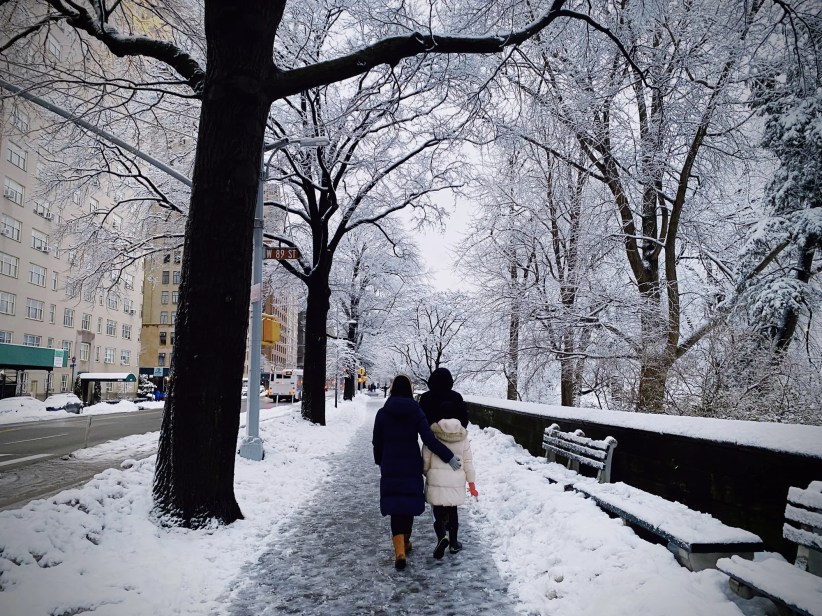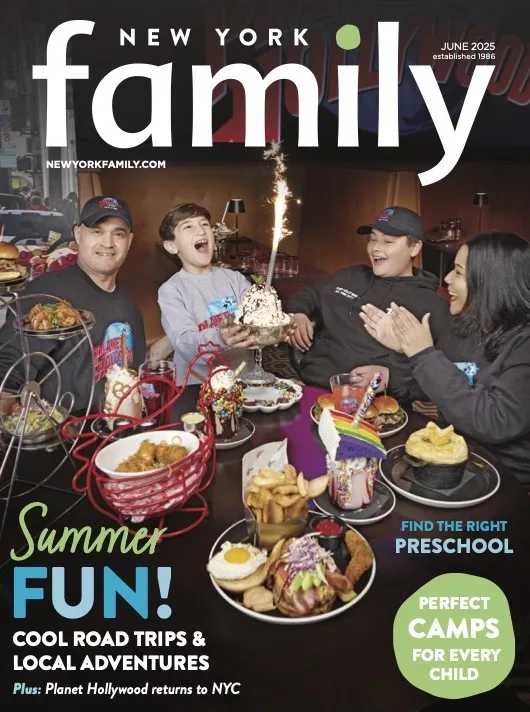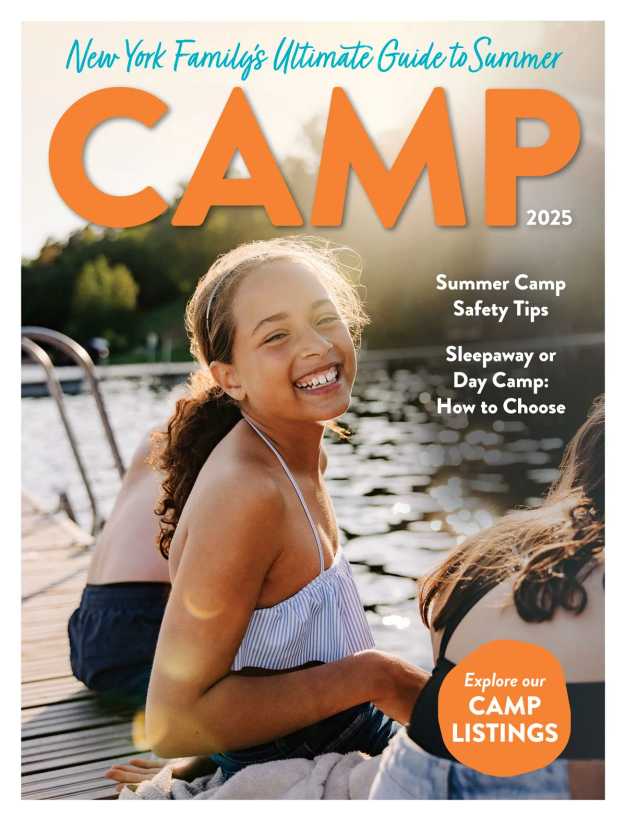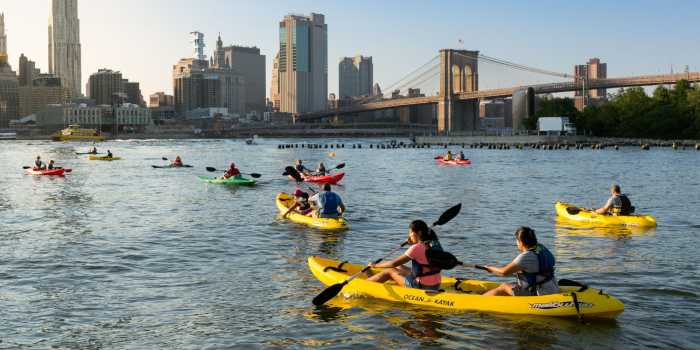
Stay Safe in the Cold Weather: Tips for New York Families
As New York braces for one of the first snowstorms of the season, it’s a good time to think about how to keep yourself and your family safe. With the snow starting to fall and temperatures dropping, winter weather can quickly become dangerous if you’re not prepared.
With a winter storm quickly approaching, it’s getting dangerously cold outside. Here are some simple steps you can take to prepare, and tips from medical experts, the National Weather Service, the CDC and Ready.gov for staying safe in cold weather.
Psst…Check Out 14 Great Books for Kids to Curl Up With This Winter
What the Winter Weather Terms Mean
Lots of terms get thrown around by weather channels when cold weather sets in, and knowing what those terms mean is the first step to staying safe.
A Winter Weather Advisory means winter elements (like snow, ice or sleet) are expected, but not to a degree to meet the warning criteria. Be prepared to see these conditions on the roads and take care when traveling.
Winter Storm Watches occur when there’s a chance of a significant winter storm based on present weather conditions.
Winter Storm Warnings are issued when severe winter weather (including heavy snow or heavy freezing rain) is imminent or occurring. They’re usually issued in the 12 to 24 hours before the event is expected to begin. If one of these is issued, do not travel and delay any plans to do so until conditions improve.
What to Wear
If you do have to go out into the cold, prepare by wearing the right clothing. As the temperature drops, add extra layers of clothing to stay warm.
For example, wear one to three layers plus an outer wind and waterproof layer when it’s chilly or cold, and add extra layers (including an insulating layer) in extreme cold conditions.
Wear warm and waterproof shoes or boots. Cover your face, head and hands, especially when it gets extremely cold.
Be sure to dress your kids in plenty of layers, too, preferably in breathable materials to prevent sweating. And protect those little hands and feet, Whitney Casares, MD, a board-certified pediatrician and author of Doing it All: Stop Over-Functioning and Become the Mom and Person You’re Meant to Be, said.
“Pay attention to the hands and feet, which are areas that can easily get frostbite, by covering them with warm gloves and socks, respectively,” Casares explained. “Since children lose a significant amount of heat through their heads, hats are a must when the temperatures drop.”
Stay Safe Near Ice
When it comes to ice, always play it safe and pay attention to posted safety signs around water in parks. Make sure your kids know to avoid walking on frozen lakes, ponds, or rivers, as the ice can be dangerously thin. Keep a close eye on kids and don’t let them near the ice without supervision.
If you hear cracking, lie down to spread your weight and reduce the risk of falling through. If someone falls in, call 911 right away with exact location, and don’t attempt a rescue yourself.
Take Care When Traveling
Traveling can get dangerous in cold weather. Stay safe while driving by checking road conditions before you head out.
If conditions are severe, stay home and don’t make unnecessary trips. Consider taking extra steps to winterize your vehicle by looking into snow tires.
Add an Emergency Supply Kit To Your Car
If you drive in this weather keeping an emergency kit in your car is a good way of staying prepared and safe in the chance that you get stranded in the snow or the cold.
Keep your car stocked with supplies like jumper cables, flares, an ice scraper, a car cell phone charger, blanket and a map.
Take extra precautions by going out with a full tank of gas when it gets cold and keeping an eye on things in your car like antifreeze levels, brakes, the ignition system and the heater, defroster and thermostat.
Know The Signs of Hypothermia
Hypothermia, an unusually low body temperature, is a problem that can arise in cold conditions. Signs of hypothermia include shivering, exhaustion, confusion, memory loss, slurred speech, stiff muscles and drowsiness.
And children are even more at risk, explained Krupa Playforth, MD, a board-certified pediatrician, mom and founder of The Pediatrician Mom.
“Younger kiddos are at higher risk than adults because they have a larger surface area to mass ratio, and their bodies aren’t as efficient at doing things like increasing heat production through shivering,” the doctor said. “For younger toddlers and infants, it can also be hard for them to recognize if they’re getting too cold or uncomfortable, or to communicate it.”
This means any adults supervising children during cold weather should know what to watch for.
“Many children become rosy-cheeked in the cold, but monitor to make sure that this is not worsening or spreading,” Playforth said. “Watch for fatigue, clumsiness, slow or shallow breathing, confusion or slurred speech, or really, anything out of the ordinary. Shivering is helpful to watch for because it is an earlier sign. As hypothermia sets in and core temperature drops, shivering actually stops as well, so it should not be the only sign you’re watching for.”
If you suspect someone is suffering from hypothermia, get them to a warm room and start warming the center of the body first. Keep them dry and wrapped in warm blankets.
Stock Up Ahead of Time
Preparing your house for a cold spell or winter storm can start long before you get the notification of a winter storm warning.
Some items to keep in your house include a flashlight and extra batteries, first-aid supplies, baby supplies and extra non-perishable and ready-to-eat food. Check on your stock of these items as winter weather starts to get close.
Heat Your Home Carefully
The instinct is to turn up the heat when the temperature drops, but be sure to do it carefully to keep you and your family safe. If you’re using a fireplace, wood stove or space heater, take fire safety precautions and make sure the area’s properly ventilated.
For gas furnaces, check that it’s not blocked by a snowdrift when it’s safe to go out. Never use items like generators, charcoal grills or camp stoves inside your home, and protect yourself from carbon monoxide poisoning by keeping a detector in your house.
What If My Heat Goes Out?
If your heat goes out, you can take steps to keep your home warm. Close off unused rooms to avoid wasting heat, stuff towels or rags under cracks in doors and close blinds and curtains to keep heat in.
Layer up with loose-fitting, lightweight and warm clothing, but be careful to avoid overheating, sweating and the chill that comes after.
Watch The Water In Your House
Extreme cold temperatures can cause water pipes to freeze, rupture or break. If you’re expecting freezing temperatures, leave water taps slightly open so they drip continuously, keep the temperature inside your house warm as much as you can. In the event that your pipes do freeze, don’t thaw them with a torch.
Venturing Outdoors? Keep Your Family Safe and As Warm As Possible
Many people shiver at the mere thought of freezing temperatures and gusty winds. But it’s still possible for New Yorkers of all ages to enjoy the beauty of winter comfortably and safely—not just by looking through a window, but even when you have to go outside to brave the elements.
Preparing for your family’s trek outdoors starts with having the items you need to stay safe and comfortable, explained Playforth.
“Preparation is important. Knowing what to watch for, when to seek help and having supplies on hand can go a long way to prevent cold weather issues,” Playforth said. “Make sure you’re stocked up with extra blankets, extra dry clothing including hats, mittens and socks, and extra food and water. Even if you aren’t planning to travel, making sure you have a full gas tank in the car is important so you can evacuate if needed.”
Playforth also underscored the importance of checking on elderly members in your community and prioritizing your pets’ safety, too.
Here are some additional tips for staying as warm and safe as possible when you’re outside this winter:
- Layer Up!
As mentioned earlier, wearing layers when venturing out into the cold is key. Keep layers in mind when dressing kids, too.
Light layers are best. For the first layer, pick clothing that is snug but not restrictive, light-weight, moisture-wicking and warm (such as thermal underwear). Then add layers based on what you expect to be doing.
“A rough guide would be to include a second layer that is insulating and warm, such as a wool sweater or warm pants,” Playforth said. “The top layer should be waterproof and offer protection from wind. Ideas here would include waterproof jackets or snowsuits. Additionally, remember hats, gloves and scarves, but make sure you have extras because kids lose these at a remarkable rate.”
- Drink Up
Hydration is always important, even when it’s cold outside. Make sure your kids are staying hydrated, too. Sometimes, when people are cold, they might be less likely to reach for a beverage. Sweat can also be less obvious during the cold weather.
“But when the heating is on or we’ve been dressed in layers or sweating while playing outside, replenishing those fluids is important,” Playforth said. “You may not feel like drinking as much in the winter, but remember water can help regulate your body temperature. You can also sneak hydrating foods into your little one’s diet by serving them oranges, cantaloupe, celery, strawberries and yogurt.”
- Go Sledding, Safely
When there’s a good amount of snow, chances are your kids might beg you to get the sled out. Sledding is a fun wintertime activity for kids, but it’s important to do so safely.
Frostbite can happen in the snow, so make sure your child’s hands are covered with warm, well-fitted gloves. And once again, layering up on clothes is important.
“A base layer, including a snugly-fitted long-sleeved shirt and a pair of breathable long underwear, can also help prevent abrasions during sledding accidents or irritation from snow exposure, Casares said. “Always supervise your children during sledding and make sure the area they’re sledding through is clear of any obstacles or other people they might crash into.”
More Information
New Yorkers can sign up for NotifyNYC, the city’s free emergency notification system. Through NotifyNYC, New Yorkers can sign up to receive phone calls, text messages and email alerts about severe weather events and emergencies. Sign up by calling 311 or visiting Notify NYC.























